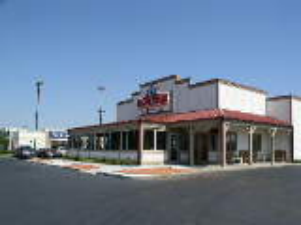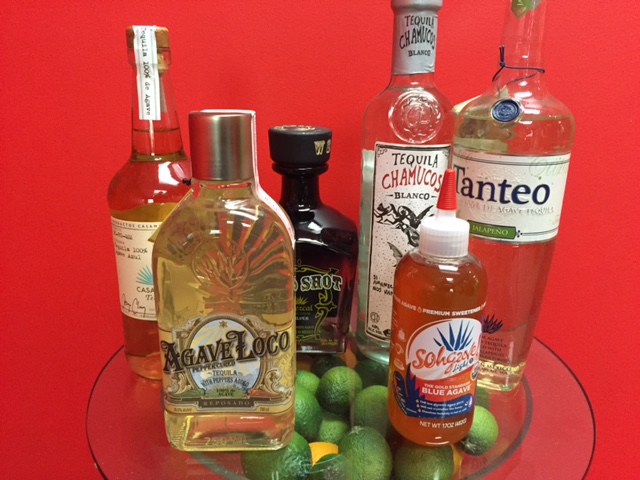Buyer Case Study: Tumbleweed Tex-Mex Grill & Margarita Bar 5/1/2015
“First, can I get a consistent supply at my distributors in Louisville and in Columbus, Ohio?” he says. “I am also looking for items that are the same or better quality than what we currently offer, and of course, the price has to be right, because you don’t want to have to keep raising prices on guests. So you have the have a balance of all three.”
Tumbleweed is a casual dining Tex-Mex chain with 22 locations in Kentucky, Indiana, and Ohio, as well as 17 international Chi-Chi’s restaurant franchises. The 40-year-old chain offers Tex-Mex fare of steaks, ribs, chicken, and seafood all cooked on a mesquite grill, as well as “original Tex-Mex favorites” of burritos, enchiladas, chimichangas, and fajitas.
“It’s the original American cuisine, though it’s a little spicier than you would get with Mexican food,” Brooks points out. “Tequila is also big with us, and perfect for Tex-Mex. We have 25 tequilas on the menu, and we are always developing new margaritas to complement the various menu items -- many you won’t find anywhere else.”
These include Tumbleweed’s Grape Rocks Margarita, which contains grape Kool-Aid, tequila and Pop Rocks, and a Birthday Cake Margarita, which has the flavor of a birthday cake and is served with whipped cream, confetti, and a sparkler on top to be blown out by the birthday guest. Also available are 13 tropical-flavored margaritas, including everything from mango and coconut to wild berry, as well as traditional flavors like raspberry and peach.
Tumbleweed gets a wide variety of guests, and is especially popular for celebrations of all kinds. But it can also bring the party to customers via its catering business, which can accommodate groups ranging in size from 10 to 100 to as many as 1,000 people. Catering has become a large part of Tumbleweed’s business model, and has grown to about 5 percent of total sales. The restaurant stays closely engaged with its customers via a strong social media presence, recently launching individual Facebook pages for each restaurant – in addition to the existing corporate page – to bring this engagement to the local level.
Problems and Opportunities
Over the past couple of years, however, Brooks has faced challenges adjusting to rising commodity prices, particularly with beef. “From time to time the commodity markets are a challenge,” says Brooks. “We’re at an all-time high for steaks and burgers and anything beef-related. We might have been paying $2.50 a pound for sirloin three years ago, and now we’re paying $7 or $8 a pound. To adapt to this, we may try to shop around, but to maintain the quality, eventually you have to raise prices. But if you raise prices too often, then customers stop buying as much.”
One solution to this is menu engineering, in which Brooks puts on his analyst hat and adjusts the restaurant’s offerings and develops new ones that emphasize other commodity items. For example, he may expand Tumbleweed’s chicken offerings, since chicken prices have been relatively consistent over the past few years. “Other good substitutes for beef are seafood, as well as pork, which is back down in price again this year,” he says. “Cheese prices are also down, so anything with cheese can help offset the costs of steak and burgers.”
This is where ECRM comes into play – its events are his go-to source for finding items that can help him with his menu engineering, to create new and unique offerings that reduce his reliance on beef as an ingredient. His current role also involves mixology – creating Margaritas and other mixed drinks to complement the ever-changing menu – so he is always on the lookout for new brands of tequila.
A veteran of approximately 30 ECRM events, Brooks has attended several each year for the last five years, including its Foodservice; Natural, Organic & Specialty; Global Wine, Beer, and Spirits; and Frozen Refrigerated and In-Store Bakery EPPS events.
“As a buyer these events are a great way to see lots of potential suppliers for my various food and beverage needs in a very short amount of time,” says Brooks. “I’m exposed to more suppliers in three days with ECRM than I’d see over two months back in Louisville having them come to see me. I’m sure it’s more cost effective for the suppliers, as well. During the EPPS meetings we can quickly determine if the product is a match, and if it’s not a match at the moment, worst case is I stay in touch with them just in case there is something we can do down the road. It’s a great way to line up potential sources for the future, which can lead to better pricing and better quality at Tumbleweed. So I can address those issues of supply, quality, and pricing, quickly and efficiently.”
Additionally, many of these suppliers he meets at ECRM events he’d never meet at all from his home office, he says, as some of the newer, smaller suppliers don’t have the budget or resources to travel to visit regional restaurants.
Super-Networking
A great conversationalist, Brooks is a huge believer in networking, both as a marketer in promoting his restaurant and as a buyer looking to build relationships with sellers. He uses his time at ECRM’s events to cultivate as many connections as possible – both during the events EPPS meetings as well as its evening networking functions, which range in activities from a Food Truck night with an open bar and DJ, to offsite dinners at top local restaurants, to private parties at amusement parks.
“All of that connecting helps tremendously,” says Brooks. “And the networking events during the evening really complement the EPPs meetings. If you make a good connection during the 10- or 20-minute meeting, you can keep the conversation going throughout the evening. You can spend quality time with one person, or jump around to 10 people or even dozens; the sky’s the limit. It’s important to build relationships because some people move from one company to another, and it can open doors for you.”
He adds: “When I started coming to these events I had just 300 LinkedIn connections. Now I have more than 1,500. The ECRM staff at the event helps to develop and nurture these relationships – they do a tremendous job at making introductions and are very active participants at their events. At most other events, I never even meet the staff who are running them. At ECRM, they are all an active part of the conversation,”
In a way, Brooks himself has become an active participant in ECRM events. He is a regular panelist on educational sessions the company holds for new attendees to help teach them how to get the most from the various ECRM tools and meetings, and he has been a judge for Grand Tasting Awards at three Global Wine, Beer, and Spirits events.
The Grand Tasting is held at every Global Wine, Beer, and Spirits event, and provides an additional opportunity for suppliers at the event to get additional exposure, and helps Steve come up with ideas for his menu development. “It’s extremely rewarding to witness the entire process,” says Kevin Consolo, ECRM’s category development director for adult beverage and foodservice. “From Steve tasting a cocktail at our event, to visiting him at his restaurant and seeing the product on the Tumbleweed menu and the bottle behind the bar. Anytime we can create an additional environment for suppliers and buyers to discover synergies and a build a future relationship, we will certainly continue to fit that into our agenda.”
For Steve, it’s an opportunity to contribute to the industry he truly loves. “It’s quite an honor to be able to put my mark over such a wide range of items,” says Brooks. “I’m happy to help; it’s an opportunity to give back to the folks at ECRM for all of the help they’ve given me.”


